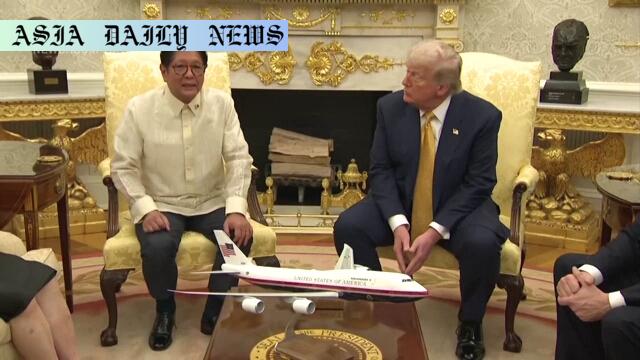US-Philippines Trade Deal: The two nations address economic and military collaboration amid a newly negotiated trade agreement.
The US and Philippines solidified a trade deal with key concessions on tariffs and market access.
Manila agreed to no tariffs on US goods while the US imposed a 19% tariff on Philippine exports.
The deal includes $60M in US assistance for energy, maritime, and economic growth.
Expanded military collaboration emphasizes the strategic partnership amid South China Sea disputes.

Introduction to the US-Philippines Trade Deal
The United States and the Philippines have reached a major trade agreement following discussions in Washington between US President Donald Trump and Philippine President Ferdinand Marcos Jr. The agreement signifies a pivotal step in the partnership between the two nations, reflecting their shared economic and strategic interests.
Key Provisions of the Agreement
Central to the agreement is the imposition of a 19% tariff on exports from the Philippines to the United States, while the Philippines commits to opening its market to US goods without any corresponding tariffs. This significant concession by the Philippines includes the removal of tariffs on US-produced automobiles and a commitment to importing increased quantities of US soy, wheat, and pharmaceutical products. These provisions aim to strengthen the bilateral trade relationship but have sparked discussions about the potential economic implications for both nations.
Military and Security Cooperation
Beyond economic ties, the agreement underscores the deep strategic relationship between the US and the Philippines. President Marcos emphasized that the deal cements cooperation on security matters, particularly given the ongoing territorial disputes between the Philippines and China in the South China Sea. By explicitly recognizing the United States as the Philippines’ “strongest, closest, most reliable ally,” Marcos underscored the geopolitical importance of this partnership.
US Assistance Funding
To reinforce this partnership, the US State Department announced an allocation of at least $60 million in foreign assistance to the Philippines. This funding is earmarked for energy development, maritime improvements, and economic growth initiatives, further solidifying the alliance between the two countries and providing significant economic benefits to the Philippines.
Regional and Global Implications
This agreement marks a reaffirmation of the US’s commitment to its allies in Southeast Asia amidst increasing tensions in the region. The South China Sea’s strategic importance, coupled with China’s assertive policies, makes this partnership critical. By strengthening trade and security ties with the Philippines, the US is signaling its dedication to maintaining stability and counterbalancing growing Chinese influence in the region.
Concluding Thoughts
The US-Philippines trade deal represents a blend of economic and strategic diplomacy, with benefits and challenges for both nations. While the 19% tariff on Philippine exports may pose economic hurdles, the increased US investment and military cooperation reflect the depth of the two countries’ alliance. As a key US ally in Southeast Asia, the Philippines continues to play a vital role in regional security and economic initiatives, making this agreement significant not just bilaterally but regionally and globally as well.



Commentary
Economic Balancing Act
The US-Philippines trade deal highlights the complexities of forging economic partnerships in a rapidly changing global landscape. While the agreement aims at strengthening ties, it presents both opportunities and challenges. By imposing a 19% tariff on Philippine exports while allowing duty-free access for US products, the deal reflects a power imbalance that may lead to debates within the Philippines’ domestic economy. For the US, opening new markets in Southeast Asia offers economic and strategic advantages but also raises questions about protectionist measures on imports.
Strategic Positioning in Southeast Asia
Beyond economics, the agreement delineates a strategic alignment at a time of heightened tensions in the South China Sea. The Philippines’ reaffirmation of its alliance with the US sends a clear message to China regarding its regional ambitions. The inclusion of $60 million in US assistance further exhibits a commitment to bolstering the Philippines’ economic and maritime capabilities, which are critical in asserting sovereignty and security interests.
Dynamics of Concessions and Gains
It is noteworthy that President Marcos acknowledged the concessions made by Manila while emphasizing the benefits of strengthened military cooperation. This interplay underscores how nations negotiate trade-offs to achieve broader strategic goals. Whether the economic sacrifices will translate into tangible security and development benefits remains to be seen, but the deal undoubtedly reflects the Philippines’ pivot towards a stronger reliance on the US amid regional volatility.